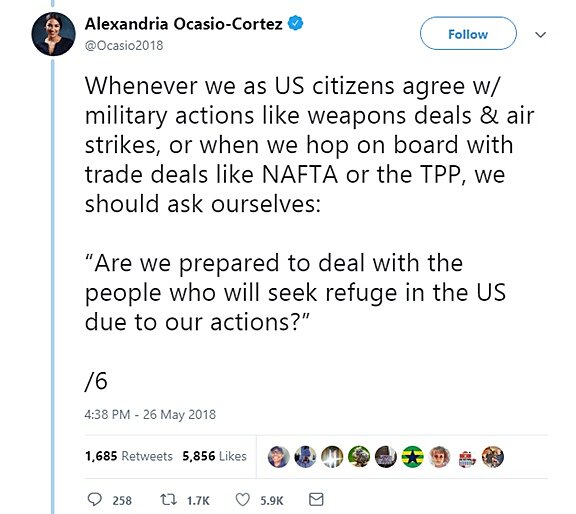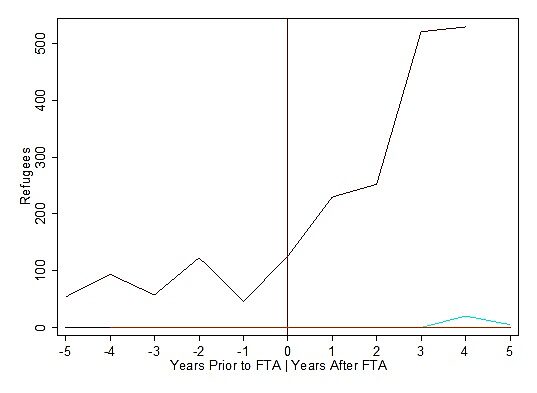Alexandria Ocasio-Cortez, the recent winner of a Democratic primary for Congress in New York, argued that free-trade agreements (FTAs) have caused the number of refugees and asylum seekers to the United States to grow. This is a somewhat common claim among some critics of trade or FTAs in particular.
To test this claim, we gathered a list of all the FTAs that the United States has signed and how many asylum seekers and refugees they sent to the United States since the year 2000. We combined all asylum seekers, affirmative and defensive, that were counted by the United Nation Human Rights Commission. Some asylum seekers from these countries are double or triple counted due to the oddities of the asylum system. We then added refugee admissions from the Department of Homeland Security.
Next, we ran several regressions to see the relationship between having an FTA with the United States and the number of asylum seekers, refugees, or those two categories of humanitarian visas combined who arrive in the United States from those countries. The first regression was a difference-in-differences with two-way fixed effects. The second was a difference-in-differences regression with linear time trends. The third was a triple difference-in-differences with two-way fixed effects that also included asylum seekers, refugees, and humanitarian immigrants from Latin America specifically. To ensure proper statistical inference, we computed robust standard errors clustered at the country level to correct for country-level autocorrelation in these variables.
Our results are that there is no statistically significant change in the number of asylum seekers or refugees that countries send to the United States after they sign an FTA in any of the above regressions. We find very low within R‑squares for these models that suggest that the presence of FTAs has very little predictive power for within-country variability for the number of asylum seekers and refugees. In other words, FTAs don’t explain the flow of asylum seekers and refugees, and other variables that we did not include in our model do.
Figure 1 shows the number of asylum seekers from countries that have signed an FTA since 2000 in the five years before and after the agreement going into effect. Each line represents a different country. There is no relationship between signing an FTA and the number of asylum seekers.
Figure 1
Asylum Seekers within Five Years of Signing an FTA per Country
Source: United Nation Human Rights Commission
The refugee system is the other half of the humanitarian immigration system and it shows no change in the number of asylum seekers before and after the signing of FTAs (Figure 2). It’s worth noting that nations that send refugees to the United States send very few refugees and almost all of those sent in Figure 2 are Colombian.
Figure 2
Refugees within Five Years of Signing an FTA per Country
Source: Department of Homeland Security.
There are many potential explanations for changes in the number of asylum seekers and refugees coming to the United States. They range from changing conditions in other countries to alterations in American law or policy and everything in between—but let us set aside the notion that FTAs somehow force people to flee their home countries.



